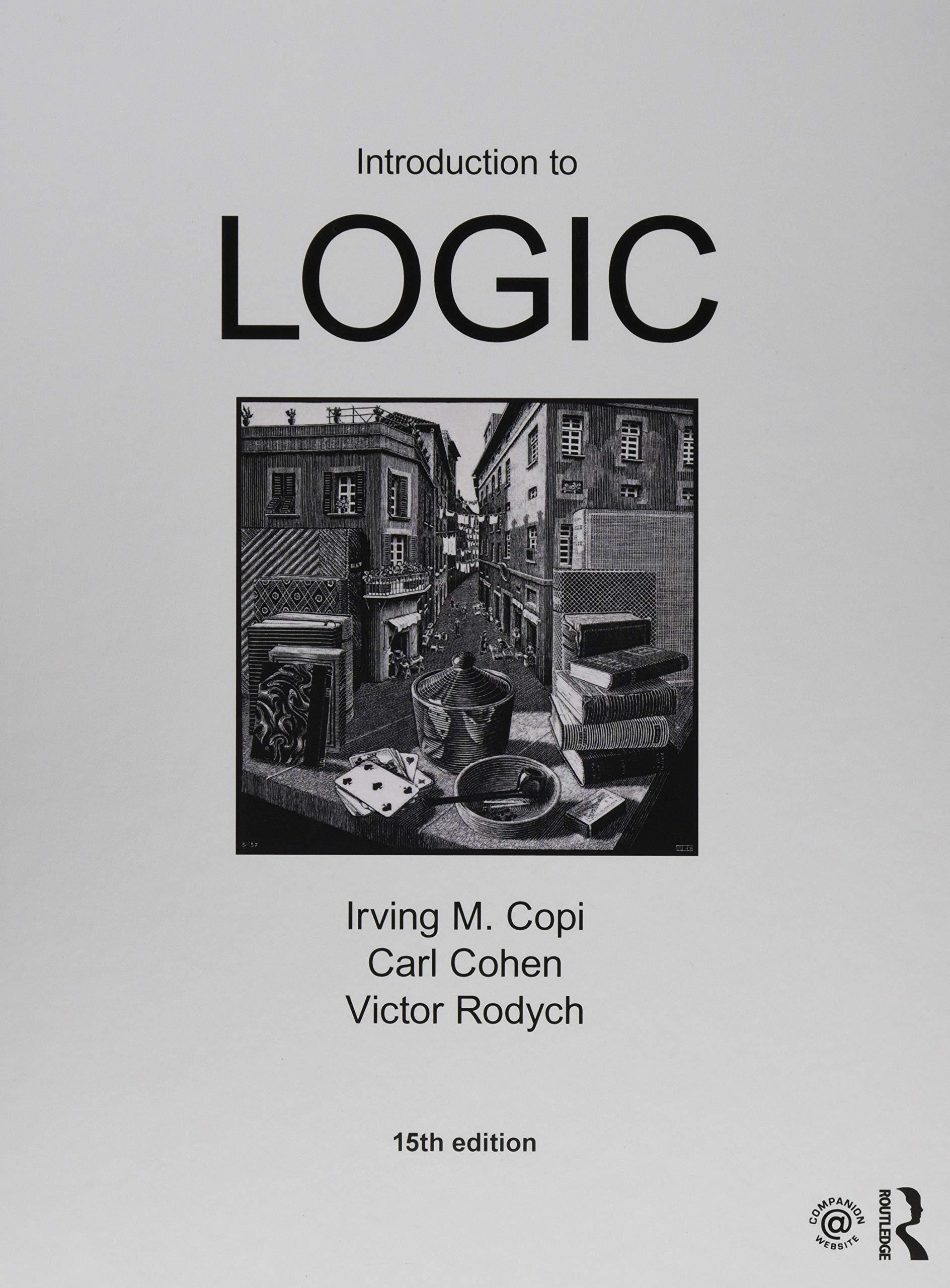The following problems require reasoning for their solution. To prove that an answer is correct requires an
Question:
The following problems require reasoning for their solution. To prove that an answer is correct requires an argument (often containing subsidiary arguments) whose premises are contained in the statement of the problem—and whose final conclusion is the answer to it. If the answer is correct, it is possible to construct a valid argument proving it. In working these problems, readers are urged to concern themselves not merely with discovering the answers but also with formulating arguments to prove that those answers are correct.
Six balls confront you. Two are red; two are green; two are blue. You know that in each color pair, one ball is heavier than the other. You also know that all three of the heavier balls weigh the same, as do all three of the lighter balls. The six balls (call them R1, R2, G1, G2, B1, and B2) are otherwise indistinguishable. You have only a balance scale; if equal weights are placed on the two sides of your scale, they will balance; if unequal weights are placed on the two sides, the heavier side will go down. With no more than two weighings on that balance scale, how can you identify the heavier and the lighter balls in all three pairs?
Step by Step Answer:

Introduction To Logic
ISBN: 9781138500860
15th Edition
Authors: Irving M. Copi, Carl Cohen, Victor Rodych





